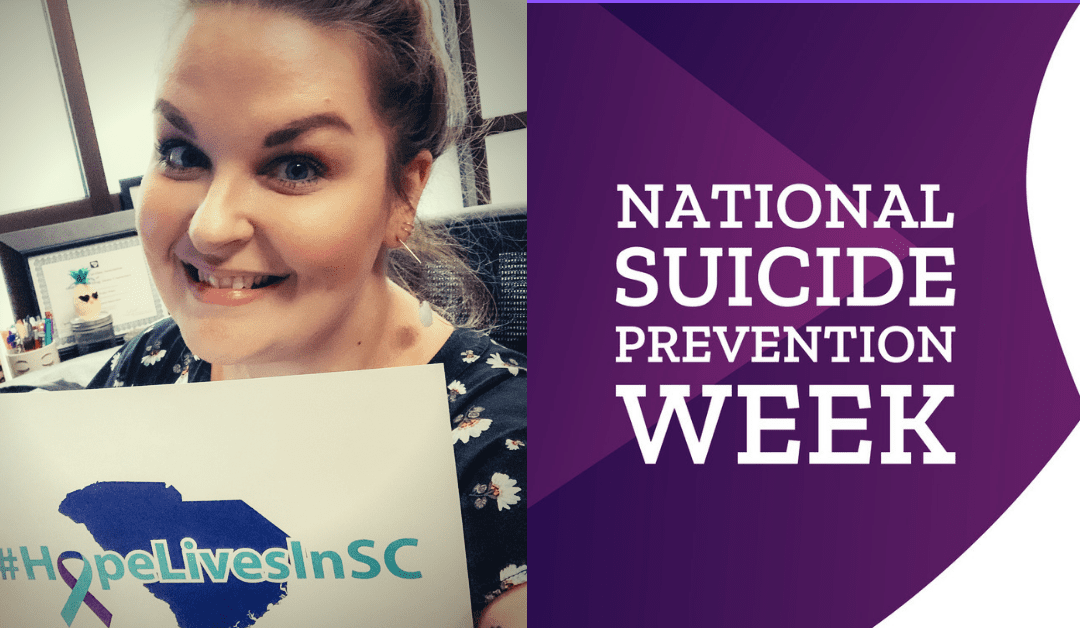A guest blog by Jenniffer Weller-White, LRADAC’s Director of Treatment[vc_single_image image=”8445″ img_size=”full”]
September is an important month at LRADAC for us and the individuals we serve. It’s a time to honor the recovery process, bring awareness to the impacts of treatment, take extra steps to reduce stigma and celebrate the stories of those overcoming substance use disorders. Not only is it Recovery Month, but it’s also National Suicide Prevention Month! LRADAC works every day to identify and reduce the risk of suicide among our patients. Let’s discuss the ways treating suicidal thoughts and risk factors aligns with how we treat substance use disorders.
[vc_separator][vc_single_image image=”8454″ img_size=”full”]Step one to reducing stigma and increasing connection is using a language of recovery. Words are powerful and set the tone for the way we think about and experience the world around us. Being intentional in our word choice can help validate one’s feelings and experiences and open the doors to communication. We like to speak about recovery and treatment in ways that align with the medical model since addiction is a disease. Using language like sober rather than clean removes judgment and negative association. Recurrence rather than relapse promotes the idea that this may be a return of symptoms rather than a flaw someone hasn’t overcome. In reference to suicide, it’s not a crime, removing the legal suggestion of someone committing suicide may help those experiencing thoughts of suicide to reach out for help from others. We can also use the word suicide as a noun and a verb to describe the thoughts someone may have and the action they may take. Talking about suicide or the risks of using/misusing substances does not make someone more likely to engage in those behaviors. It’s actually the opposite, the more we communicate and normalize topics, the more comfortable we are bringing them up when we’re challenged by them ourselves.[vc_separator][vc_single_image image=”8457″ img_size=”full”]When we’re fearful about a challenge or a topic, we may be easily influenced by myths that support those fears. Let’s get rid of those myths and look at the facts! Substance use disorders impact people across race, financial status, gender, etc. So does suicide. It’s easy to think, “that won’t happen to my loved one,” or “that’d never happen here,” but the prevalence of substance use disorders and suicide rates, tell us that’s not true. When we know better, we can do better. Let’s challenge the myths we come across and look at ways we can better inform ourselves. Did you know that a person doesn’t have to have a depressive disorder to have thoughts of suicide? Did you know that LRADAC is a community distributor of Narcan to make overdose prevention accessible in the Midlands?[vc_separator][vc_single_image image=”8458″ img_size=”full”]Knowing the signs and symptoms of suicide and substance misuse early can help ensure intervention happens in a timely manner. Rather than waiting for a crisis, if we know some of the indicators that something may be amiss, we can better address them in ways that feel proactive. Educate yourself on the signs and symptoms of substance use/misuse, and the potential signs of suicidal thoughts and behaviors. We often experience hindsight during or after a crisis, but we can respond proactively when we see some of those things on the front end and speak out about it when it’s happening.[vc_separator][vc_column width=”2/3″]
#HopeLivesInSC
Don’t be afraid to speak up, reach out, or express your own challenges or concerns. In the Midlands, you can contact LRADAC at 803.726.9300 with questions/concerns about prevention, treatment, and intervention. You can also contact the National Suicide Prevention Lifeline at 1-800-273-8255 or the Crisis Text Line at 741741.[vc_single_image image=”8444″ img_size=”small” alignment=”right”]

